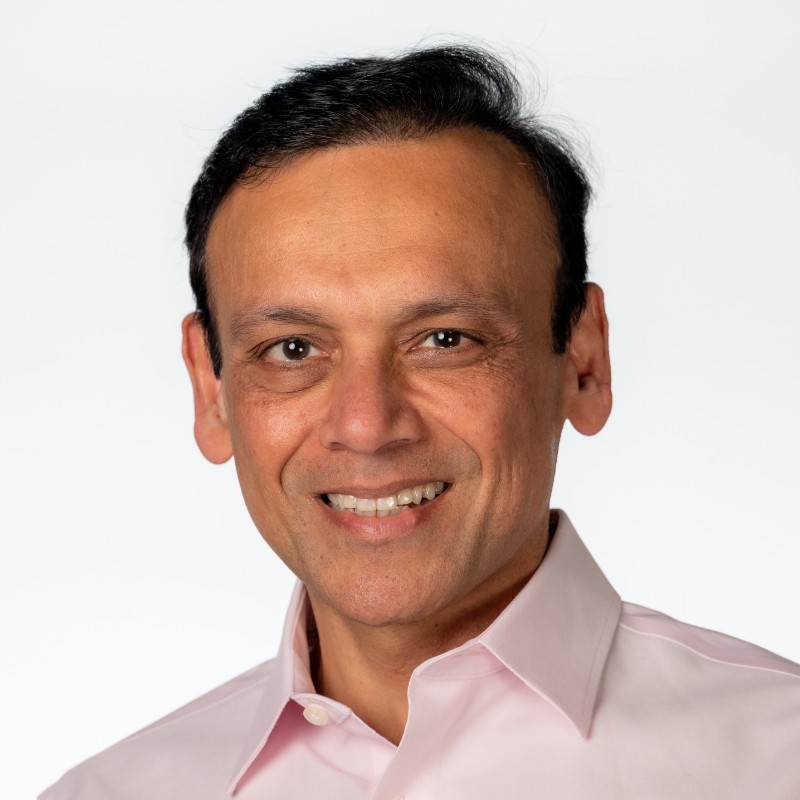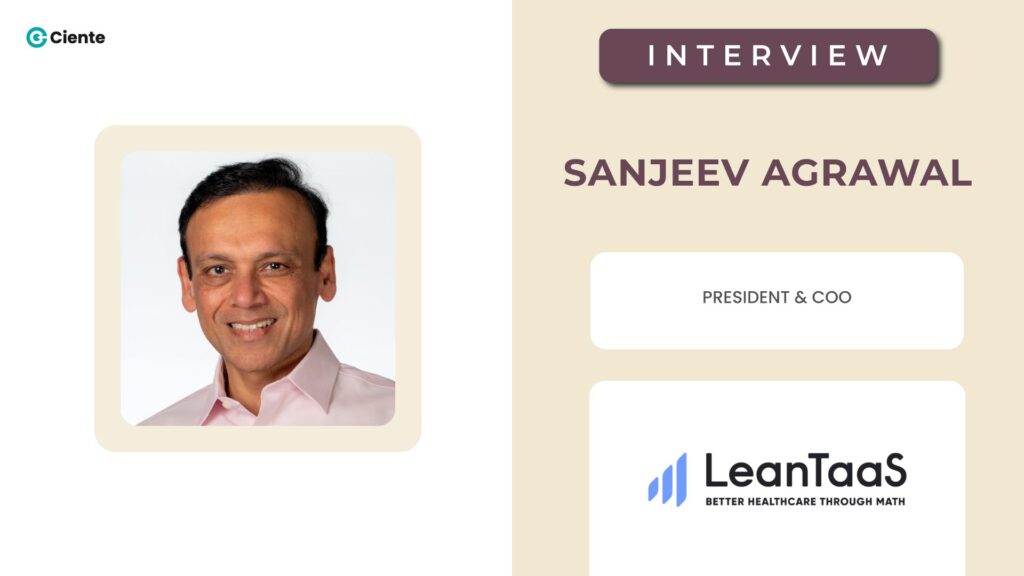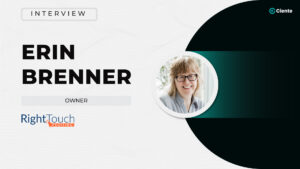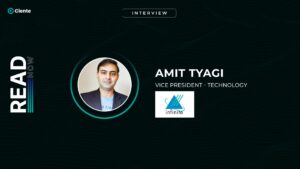You were Google’s first Head of Product Marketing and have led three successful startups. Could you share a bit about yourself and your career trajectory?
Like so many other Americans, I am an immigrant to the United States and grew up in Calcutta, India. I first came to the country for college in the late 80s and, after obtaining my bachelor’s and master’s degrees from MIT, I spent a brief stint as a chip designer at Analog Devices. I then spent a few years doing management consulting with McKinsey & Co. where I was able to learn the basics of strategy, operations, and finance while working with global business across the U.S., Europe and Asia.
In 1997, I came to Silicon Valley and have been here ever since – first at Cisco Systems, and then as you mentioned, at Google as their first head of product marketing. I’ve also led three successful startups: Tellme Networks (acquired by Microsoft), Aloqa (acquired by Motorola), and Collegefeed (acquired by AfterCollege). In 2015, I came across LeanTaaS when the company was solving interesting problems using predictive analytics. After I joined, we decided to focus entirely on healthcare operations because it is such a big need and a massive market where we could have a lot of positive impact. Since then, we now work with over 680 hospitals at more than 180 health systems across the U.S.
Can you tell us more about LeanTaaS and your role there?
I’m the President and Chief Operating Officer at LeanTaaS. At LeanTaaS, we help hospitals optimize the use of constrained capacity with AI-powered software solutions. It’s a challenging problem: matching the supply of some of the most expensive assets — think hospital beds, operating rooms, and infusion chairs — plus available staff with ever-changing patient demand. Getting the most out of hospital assets is increasingly critical as patient volumes rise, staffing shortages intensify, and margins backslide.
The old answer was to build or buy new capacity or hire more staff, but that’s an expense that hospitals can’t afford to make now. Today’s answer? Do more with less and make your assets sweat. Maximize capacity that already exists by leveraging powerful AI technology.
That’s exactly what we do at LeanTaaS. Our AI-powered software solves the complex, operational challenge between supply and demand so that healthcare leaders can know precisely what’s coming to take the right action — before problems even arise. Legacy technology and current workflows are not sufficient. Our iQueue solutions use Lean principles and predictive and prescriptive analytics to forecast future demand based on historical data, recent pattern shifts, and real-time insights. The result? Expensive assets are utilized better, hospital ROI improves, patient access increases, and clinicians work at the top of their license with reduced administrative burden.
What do you like best about working in this field?
Enabling operational excellence in healthcare is not a hard cause to get obsessed about. Each and every one of us has personal stories about ourselves, our families, parents, kids and loved ones who have had to deal with long wait times to get medical appointments and often a poor experience in waiting rooms in EDs and doctor’s offices.
I have had the privilege of working on many hard problems in my life at companies like Google, Cisco Systems, and Mckinsey & Co. but none of them felt as “real” or personal or satisfying as seeing wait times for older patients in waiting rooms shrink by hours as a result of our solutions. Or having a surgical patient who could get access to the surgery they need faster because our tools enable surgical staff to find more open time sooner. Or seeing hospitals be able to send patients home faster because we are able to help them anticipate discharge barriers and address them before they happen.
We see such a great need in the healthcare industry for data-driven analytics, and the resultant improvement in operational workflows through improving the underlying math. It also helps that we have had very strong market success — we have grown 40% year over year, recently had Bain Capital take a majority stake in the company, and acquired Hospital IQ to create a $1B company and the first health tech unicorn of 2023.
Can you shed some light on your iQueue platform?
Our technology, powered by AI and predictive analytics and fed by the health system’s historic and real-time data, supports health system leaders in unlocking new capacity by fully optimizing their resources and workforce across inpatient units, infusion centers, and operating rooms. We do this through our three solutions:
- iQueue for Inpatient Flow uses predictive AI and intelligent automation to dynamically manage capacity and align the healthcare workforce to meet patient demand. The solution helps healthcare leaders make complex, inpatient capacity management decisions around bed availability, patient flow, and staffing needs to improve bed turns and reduce wait times and length of stay. On average, our customers can treat 6+ new patients/bed annually.
- iQueue for Infusion Centers leverages machine learning and predictive analytics to help centers stay operationally agile by optimizing their scheduling templates, level-loading the daily schedule across the nursing staff, flagging future problem days for preventive action, and identifying which appointments should be rescheduled to improve the experience for patients and staff alike. On average, our customers generate $20k/infusion chair annually.
- iQueue for Operating Rooms is an AI/ML-based solution that provides real-time analytics and prescriptive recommendations as well as block and open time management tools, to help perioperative leaders optimize staff, equipment, and capital utilization. More surgeries can get done with the same number of rooms and staff. On average, our customers achieve 30-50 additional OR cases/year/OR and 6-8% increase in case volume.
What are the most common issues that clients approach you with?
Here is the reality of the looming challenge in healthcare in the U.S.: We all know that with a growing, aging population and the greater incidence of chronic disease as we all live longer, the need for healthcare is growing rapidly. Meanwhile, the supply of doctors, nurses, and money in the system is not growing nearly as fast. This is a massive problem — how will we as a country be able to provide the needed access to care at an affordable cost to everyone?
Despite extraordinary advances in technology and medicine that lead the world, the vast majority of U.S. hospitals manage key operational functions such as patient/case scheduling with little more than glorified calendars. Obsolete operations are slowing patients down from getting the care that they need, when they need it. This inefficiency creates a lose/lose/lose scenario for patients, providers, and staff. So the kind of operational excellence we are talking about is not a luxury, it’s a necessity.
With the power of predictive analytics, deep data science, and machine learning, using data in healthcare operations solves the problem of equipment sitting unused while patients wait months for appointments, while there are empty operating rooms and over-extended hospital staff. Hospitals are able to do more with less, and maximize their resources — providing better care for each individual patient that walks through the hospital doors.
How, according to you, is AI transforming the healthcare industry?
Our AI technology is based on the same principles many other industries have successfully used to manage variable supply and demand in an asset heavy environment. Let’s start with a few examples of industries using the power of math to solve mind-bogglingly complex issues of scheduling, asset utilization, and supply and demand.
- UPS and FedEx guarantee delivery the next morning by 10:30 a.m. anywhere in the country, despite the fact that they have no way of knowing how many packages will be shipped from any origin to any other destination on any given day.
- Amazon knows what a user is going to buy almost before the user does. Using predictive models and an increasingly precise set of analytics that can classify a user based on multiple characteristics, Amazon enables businesses to target the right user at the right time with the right product and offer — not just online but increasingly in the physical world too.
- Uber deploys almost four million drivers worldwide and manages fourteen million daily rides. Its operations system must coordinate geolocation, live messaging, booking, billing, payments, push notifications, price calculations, ratings, tipping, and more for each of these drivers and passengers, in real time. It must also ensure there is always an adequate supply of drivers to meet rider demand in a world where weather, concerts, sporting events, and other factors can shift demand in an instant.
- OpenTable has given restaurants the ability to fill seats in a way they never could in a world where phone calls and emails were the methods by which diners made reservations. This has led to massive improvements in restaurant efficiency and in consumer happiness with the booking process.
- Airlines have done a remarkable job of using data science and prescriptive analytics to turn around a historically inefficient industry. In 1999, the airlines were a $100 billion industry, yet all of the airlines (except Southwest) were going through boom-and-bust cycles, and many of them filed for bankruptcy at least once. They were hurting financially. By 2019, the industry had consolidated while doubling in size. Its ticket prices had risen at a lower rate than inflation, yet its profit margins had soared from negative territory to +9 percent. How did the airlines accomplish this turn-around? By learning to precisely match uncertain demand with a fixed, expensive supply of assets, route by route and day by day.
Healthcare operations can be improved dramatically using the same sophisticated math-driven techniques that these leaders in these other industries have used to match unpredictable demand and supply of expensive, constrained assets. Issues such as the nurse shortage, backlogged surgeries, and infusion center wait times at peak hours are all caused by operational bottlenecks that can be fixed or at least significantly reduced by using technology that predicts supply and demand patterns and enables them to be matched minute-by-minute, hour-by-hour and day-by-day. Our iQueue solutions predict, visualize, schedule, and communicate available rooms, infusion chairs, staff, and time blocks to make it easier for staff, nurses, and surgeons to direct the resources they have to the patients who need them.
What are the reasons healthcare does not leverage AI to the same extent as other industries?
It won’t come as a surprise to anyone reading this that the healthcare industry has traditionally been defined by its antiquated legacy infrastructure that admires problems rather than solves them; its special obligation to safety and accuracy that discourages trusting newer technologies; and finally, as financial resources are precious, its leaders cannot risk making an investment without a guaranteed reward. The pandemic actually helped change this tune. Health systems needed to rapidly adopt digital solutions like telehealth and our capacity management solutions to maintain access to care, and in the process they proved provider and patient demand for cutting-edge solutions, ROI, and that they could be more fast and agile in adopting technology than they even knew themselves.
However, another critical element of bringing new technology to healthcare is change management. Technology alone does not yield sustainable transformation. It must be paired with change management experts who can guide organizations through disruption towards results. That’s why earlier this year, LeanTaaS announced the launch of Transformation as a Service (TaaS), a first-of-its-kind service that guarantees outcomes. The TaaS offering provides each customer with a dedicated team that delivers the required services for implementing our technology, ensuring normalized data hygiene, automating and digitizing existing workflows, driving change management, establishing systemwide governance, and guaranteeing success.
Could you give us a sneak peek into the next growth phase of LeanTaaS?
Right now, we’re hyper focused on listening to our customers and innovating based on their specific needs and advancements in AI. It’s one of the reasons that we recently launched iQueue Autopilot, a first-of-its-kind, generative AI solution for hospital operations that provides hospital leaders with human-like conversations and actionable insights to support decision-making for patient flow, scheduling, command center, block management, staffing, and other capacity management use cases across both inpatient and outpatient settings.
Generative AI can draw on the wealth of existing and digitized healthcare data to give leaders, providers, and staff easy insights and predictions they most need to supplement their skills and expertise. Through the use of large language models (LLMs), generative AI solutions can give users immediate data-backed advice and responses in helpful terms.
Given such accessible, immediate, and powerful support, hospital leaders will be able drive higher financial results and increase access to care; nurses and providers can freely dedicate their time and highest attention to patients; and staff can operate productively day-to-day while avoiding burnout. With iQueue Autopilot, LeanTaaS is bringing our vision of “air traffic control” for healthcare — managing patient flow and capacity optimization across the continuum of care on one single platform — to life.
Can you tell us more about your work culture, and what makes LeanTaaS’ culture unique?
We’re on a mission to increase patient access to healthcare services by transforming the operational performance of health systems across the country – no small feat due to the structure of the healthcare industry in the U.S., and the less-than-adequate infrastructure in place. Tackling such an incredibly challenging problem requires uniting some of the best and brightest minds in healthcare, technology, mathematics, and operations.
We’ve long been committed to providing a working environment that ultimately supports our team’s success. During the pandemic, we shifted to a flexibility-first model that was not only a big step compared to others, but continues to run opposite to some of the most established technology companies who are now requiring their employees to return to the office. But we knew then what we still know now: this is necessary to create the best possible working environment for our employees. Their daily work has a widespread impact on healthcare throughout the country: increasing patient access to care, decreasing patient wait times, relieving pressure on healthcare workers, and reducing the total cost of healthcare delivery.
Don’t just take my word for it. We recently asked several of our own team members across the organization why they are passionate about working for LeanTaaS, and here’s what they had to say:
- “To really enjoy your work or love your company, you have to believe in the product. I believe in iQueue. It’s actually making a contribution to the healthcare industry, and to real people, patients, and providers. That’s why I really love working here.” — Digital Marketing and Demand Generation Associate
- “Our customers come to us and they say they’ve seen and felt the changes. Their nurses are happier. They’re relaying positive comments from the patients about their experiences. Those let you know you’ve achieved your mission.” — Director of Customer Success
- “I take pride in contributing to a product that directly assists the healthcare workforce. The product we developed plays a crucial role in streamlining hospital operations.” — Senior Software Developer
Would you like to highlight some key points from your book “Better Healthcare Through Math,” which was published by Forbes?
Anyone who has ever had to seek medical attention for an injury, illness, or even just a simple check-up knows how frustrating and long the process can be to get the care you need. At best it’s an inconvenience and, at worst, long wait times can deepen the severity of a patient’s condition. It’s a symptom of our current healthcare system that plays out hundreds of thousands of times a day across the country. And it’s created a lose/lose/lose scenario for physicians, patients, and medical facilities.
“Better Healthcare Through Math” begins by outlining the factors that have brought our country’s healthcare system to this brink and reveals how the issues of supply and demand, soaring costs, and a million more people entering the healthcare system each year tax the operational efficiency of an already strained system.
The book specifically outlines how data can be used to help solve the problem of equipment sitting unused while patients wait months for appointments, of empty operating rooms, and over-extended staff. With better data, hospitals are able to do more with less, and maximize their resources. Further, the book helps healthcare leaders understand how to act upon the new wealth of information at their disposal to increase patient access, decrease patient wait times, and reduce delivery costs – a win/win/win scenario.
You have been named as one of the top entrepreneurs innovating in healthcare by Becker’s Hospital Review. What keeps you motivated in this constantly evolving landscape?
There are three specific areas I’ve tried to lean into throughout my career that I believe have been the most instrumental:
- Relentless Problem Solving: At the heart of all business success is solving a difficult problem in a unique way and ideally long before others think it is a meaningful one to solve. For example, we at LeanTaaS bet on the need for improving capacity utilization in hospitals in 2015, long before “flattening the curve” was a concept that people understood. To quote Peter Thiel — “The best entrepreneurs know this: every great business is built around a secret that’s hidden from the outside.”
- The ability to “bounce back”: Good leaders have a unique ability to bounce back quickly from setbacks or failure. Entrepreneurship is more like jumping on a trampoline than going rock climbing. When you bounce back after falling down and keep pushing to accomplish something is when you build the muscles needed to succeed long term. Here’s the reality of life as I know it: every day of our lives we “fall down” in ways big or small. In my case, it could be a small argument with my kids that leaves me feeling down, or it could be something bigger like a disagreement on how to raise them with my wife. It could be a not-so-good meeting with a customer prospect, or a difference of opinion with a colleague at work. A deeply personal “fall” was five years ago when after playing reasonably competitive squash for 30 years, I was told I would never play the sport I loved again — the cartilage in my knees has thinned significantly. Like everyone else I have had jobs which were fraught with frustration — I hated some combination of my job, my boss, or the amount of money I made.
These little or big “falls” aren’t or weren’t the problem — it’s how I reacted to them that made the difference between being successful at what I wanted or not. Now whenever these occasions come up, I find myself picturing a trampoline and the way my eleven year old bounces back when she falls down. Big or small falls, she jumps right back up, ready to bounce again.
- Prioritizing Talent Development and Management: People are the backbone of a company’s success. I have always seen the importance of investing in employees’ individual talents and using each person to their strengths. Never before has the need to attract, motivate, retain, and reward talent been so key — we compete based on our products, we win because of our people. During the pandemic, we grew 40% year over year in both 2020 and 2021 largely because our team was able to turn on a dime and stay relevant as major shifts happened in our marketplace. Our team has relentless determination and grit to do what it takes to meet customer expectations and needs.
What is the most important piece of advice you would give to business leaders?
Life’s too short to waste your time on things that don’t ignite a fire in you. Imagine you had $86,400 given to you every morning to spend any way you could but if you didn’t spend it then you’d lose it. That’s what life gives us — 86,400 seconds each and every day to maximize the use of our talents and capabilities to make the world a better place for our families, our friends, and leave a legacy we can be proud of.
Money is a wonderful thing but after a point it will only buy you the freedom to do what you really want with the 86,400 seconds you have been granted every day. So choose wisely — work on something you are really passionate about and leave a lasting positive change beyond your own self.

Sanjeev Agrawal, President and COO of LeanTaaS
Sanjeev serves as the President and Chief Operating Officer for LeanTaaS, the leading AI/ML-based analytics company in healthcare operations. LeanTaaS’ predictive analytics software powers over 180 health systems and 680 hospitals across 49 states to improve access and lower costs.
Sanjeev is also the co-author of the book “Better Healthcare Through Math”. Before LeanTaaS, Sanjeev was Google’s first Head of Product Marketing, and led three successful startups — CEO at Aloqa (acquired by Motorola), VP Products & Marketing at TellMe Networks (acquired by Microsoft), and Founder & CEO at Collegefeed (acquired by AfterCollege).
Sanjeev graduated with BS and MS degrees in Electrical Engineering and Computer Science from MIT. He started his career at McKinsey & Company and Cisco Systems before joining Google. Sanjeev has been named by Becker’s Hospital Review as one of the Top Entrepreneurs Innovating in Healthcare.






